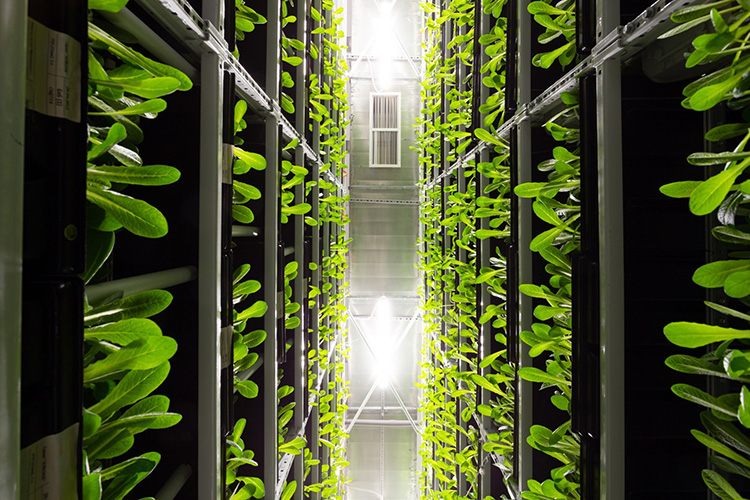Economic Viability of US Agriculture and its Impact on Sustainable Development Goals
A report on the state of the American agricultural sector in 2025 reveals a significant disconnect between production yields and farmer economic security, posing challenges to several Sustainable Development Goals (SDGs). Despite forecasts of strong crop yields, a confluence of high production costs and international trade instability is creating market uncertainty. This situation directly impacts the achievement of SDG 1 (No Poverty) and SDG 8 (Decent Work and Economic Growth) by threatening the livelihoods of American farmers.
Geopolitical Tensions and the Threat to Global Partnerships (SDG 17)
Impact of Tariffs on International Trade
Ongoing trade tensions have severely disrupted international markets, undermining the principles of SDG 17 (Partnerships for the Goals), which calls for a stable and predictable multilateral trading system. The boycott of American soybeans by China, formerly the largest buyer, exemplifies this breakdown in global trade partnerships.
- China, which imports three-fifths of all soybeans on the international market, has not purchased a single shipment of U.S. soybeans since May.
- This has led to a 23% decrease in total U.S. soybean exports, reaching a 20-year low.
- Overall agricultural exports to China were down 53% in the first seven months of 2025 compared to the previous year.
Consequences for Sustainable Food Systems (SDG 2 & SDG 12)
The market disruption has led to a significant drop in crop prices, jeopardizing the economic foundation of food production systems. This instability threatens progress towards SDG 2 (Zero Hunger) by creating an unsustainable environment for producers. Furthermore, with nearly 2 million acres of soybeans to be harvested in Wisconsin alone, the lack of export markets raises concerns about food loss and waste, a key target of SDG 12 (Responsible Consumption and Production), as soybeans cannot be stored long-term without risk of spoilage.
Rising Production Costs and the Challenge to Decent Work (SDG 8)
Inflationary Pressures on Farm Inputs
Farmers are experiencing a severe economic squeeze due to rampant inflation in production costs, which compromises the goal of providing decent work and economic security as outlined in SDG 8. Key cost increases since 2020 include:
- Labor: 47%
- Fertilizer: 37%
- Fuel and oil: 32%
- Seeds: 18%
This “vicious cycle” of paying more for inputs while receiving less for products has resulted in projections of negative margins for grain farmers in 2025, with expected prices for corn and soybeans falling below break-even points.
Farmer Sentiment and the Risk to Rural Economies (SDG 1 & SDG 10)
Widespread Concern and Perceived Crisis
The financial strain is reflected in farmer sentiment, indicating a potential crisis that could exacerbate rural poverty and inequality, directly challenging SDG 1 (No Poverty) and SDG 10 (Reduced Inequalities). A September survey by the National Corn Growers Association found that:
- Nearly half of U.S. farmers believe the country is on the verge of a farm crisis.
- Approximately two-thirds of farmers are more concerned about their farm’s finances than they were a year ago.
The Call for Sustainable Solutions over Subsidies
While government bailouts have been proposed as a temporary relief measure, industry representatives express a preference for stable and fair markets. Farmers advocate for a system where they can cover their costs and earn a sustainable living through trade rather than relying on subsidies. This reflects a desire for long-term economic structures that support the goals of decent work and poverty eradication, ensuring that farmers are not left bearing the economic brunt of international policy disputes.
Analysis of Sustainable Development Goals in the Article
1. Which SDGs are addressed or connected to the issues highlighted in the article?
The article highlights several issues that directly connect to the following Sustainable Development Goals (SDGs):
-
SDG 2: Zero Hunger
This goal aims to end hunger, achieve food security, improve nutrition, and promote sustainable agriculture. The article’s focus on the financial viability of American farmers, particularly soybean and corn growers, is central to this SDG. The economic crisis facing these farmers threatens the stability of food production systems. If farmers are operating at a loss and risk losing their farms, it jeopardizes the agricultural productivity needed to ensure a stable food supply.
-
SDG 8: Decent Work and Economic Growth
This goal promotes sustained, inclusive, and sustainable economic growth, full and productive employment, and decent work for all. The article details the severe economic downturn affecting the farming sector. Farmers are experiencing plummeting incomes, rising production costs, and financial uncertainty, which is the opposite of decent work and economic growth. The statement that “farmers are worried about losing their farms that have been in their families for generations” underscores the threat to their livelihoods and the economic health of the agricultural sector.
-
SDG 17: Partnerships for the Goals
This goal emphasizes the need for global partnerships to achieve the SDGs, including targets related to trade. The article’s core theme revolves around the breakdown of international trade relationships due to “tense standoffs over President Donald Trump’s tariffs.” The boycott of American soybeans by China is a direct consequence of these trade tensions, illustrating how protectionist policies undermine the open and fair international trading system that SDG 17 advocates for.
2. What specific targets under those SDGs can be identified based on the article’s content?
Based on the article’s content, the following specific SDG targets are relevant:
-
Target 2.3: Double the agricultural productivity and incomes of small-scale food producers.
The article directly contradicts the progress towards this target. It provides explicit examples of farmers’ incomes decreasing, not doubling. For instance, it mentions soybean prices dropping from “$14.50 a bushel” to “around $9.30,” leading to a single farm facing a “$400,000 economic loss.” The projection that “grain farmers will likely face negative margins in 2025” further highlights the severe threat to farmer incomes.
-
Target 2.c: Adopt measures to ensure the proper functioning of food commodity markets… to help limit extreme food price volatility.
The article describes a market that is not functioning properly due to political and trade disputes. The “China boycott” has caused a significant drop in soybean prices, creating extreme price volatility and market uncertainty for farmers. This situation is a direct result of trade policies that disrupt commodity markets, rather than measures taken to stabilize them.
-
Target 8.2: Achieve higher levels of economic productivity through diversification, technological upgrading and innovation.
While the article mentions strong crop yields, which can be a sign of productivity, the financial crisis it describes threatens the ability of farmers to invest in further upgrades or innovation. The statement, “Right now, we’re farming at losses,” indicates that farmers lack the capital to reinvest in their operations, which could stifle long-term productivity growth.
-
Target 17.10: Promote a universal, rules-based, open, non-discriminatory and equitable multilateral trading system.
The entire narrative of the article is an example of the consequences of moving away from this target. The implementation of tariffs by the U.S. and the subsequent “retaliatory tariffs” and boycotts from China represent a significant disruption to an open, rules-based trading system. The article shows how these actions have “cut off from key international markets” American soybean farmers, who bear the brunt of this trade dispute.
3. Are there any indicators mentioned or implied in the article that can be used to measure progress towards the identified targets?
Yes, the article contains several quantitative and qualitative indicators that can be used to measure the status of these targets:
-
Indicators for Farmer Income and Productivity (Target 2.3)
- Commodity Prices: The drop in soybean prices from “$14.50 a bushel” to “$9.30 a bushel” is a direct indicator of declining revenue for farmers.
- Farmer Profitability: The projection that “grain farmers will likely face negative margins in 2025” and the statement “we’re farming at losses” are clear indicators of negative income.
- Specific Financial Loss: The example of one farm facing a “$400,000 economic loss” provides a concrete measure of the financial impact.
- Crop Yields: The article mentions expected record yields for corn and soybeans (e.g., “104 million bushels” in Wisconsin), which is an indicator of agricultural productivity.
-
Indicators for Market Volatility (Target 2.c)
- Export Volume Decline: The fact that “total U.S. soybean exports are down 23%” and that this represents a “20-year low” indicates a severe market disruption.
- Loss of a Key Market: The detail that China, “once the largest buyer of American soybeans, has not purchased a single shipment since May” is a powerful indicator of market failure due to trade policy.
-
Indicators for Economic Distress (SDG 8)
- Farmer Sentiment: The survey finding that “nearly half of U.S. farmers think the county is on the brink of a farm crisis” serves as a qualitative indicator of economic instability.
- Rising Production Costs: Specific figures on inflation are provided as indicators of economic pressure: “labor costs are up 47%, fertilizer, fuel and oil and seed costs are up 37%, 32% and 18%, respectively.”
-
Indicators for Trade System Health (Target 17.10)
- Decline in Bilateral Trade: The statistic that “All agriculture exports to China were down 53% in the first seven months of 2025” is a direct indicator of the negative impact of tariffs and trade disputes on international trade flows.
4. Table of SDGs, Targets, and Indicators
| SDGs | Targets | Indicators Identified in the Article |
|---|---|---|
| SDG 2: Zero Hunger | 2.3: Double the agricultural productivity and incomes of small-scale food producers. |
|
| 2.c: Adopt measures to ensure the proper functioning of food commodity markets and limit extreme food price volatility. |
|
|
| SDG 8: Decent Work and Economic Growth | 8.2: Achieve higher levels of economic productivity. |
|
| SDG 17: Partnerships for the Goals | 17.10: Promote a universal, rules-based, open, non-discriminatory and equitable multilateral trading system. |
|
Source: jsonline.com







